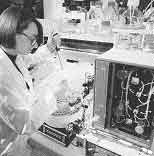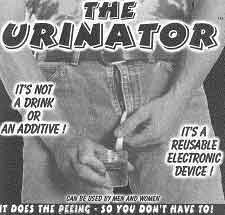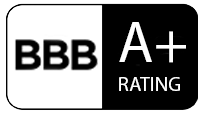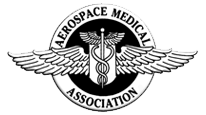
The routine FAA medical examination does not test for alcohol use and it does not include a blood test. The urine test, which is performed by Aviation Medical Examiner’s, is a screening test for diabetes and kidney disease and normally does not include a drug test.
Professional pilots are typically required to submit to regular drug testing. Pilots which test positive for illegal drugs, and those reporting their use of a disqualifying drug or medication, must be evaluated to establish eligibility for FAA medical certification. MORE
Flying High: Drug-Testing Programs
Adapted from “Health for Pilots” by Paul Gahlinger, MD, AME

The long, strange history of drug abuse
Recreational drugs have been used for thousands of years, not only during leisure time but also while on the job. Workers have used drugs for stimulation, for extra strength, for relaxation, to numb themselves against pain, or just to relieve boredom and help pass the time. The only difference today is the much wider variety of drugs available.
Drugs are commonplace in almost every type of work. The most widespread is caffeine, although it is so familiar that most people don’t even think of it as a drug. Alcohol and tobacco are the second most common, with a huge impact on worker safety and productivity. Other drugs may be used less openly but are pervasive in many occupations. For example, during the Second World War, soldiers, pilots and factory workers were given amphetamines to increase performance. Amphetamines continued to be popular after the war, to the extent that they eventually accounted for 20 percent of all prescriptions. Many new stimulants have joined the amphetamines and drug use is now more common than ever. A current study of long-distance truck drivers found that 62 percent reported at least occasional illicit drug use while driving.
While people’s right to use recreational drugs is controversial, most agree that there is no excuse to use illegal drugs at work or while operating complex machinery. Drug use by workers, however, continues to be a huge problem in the United States. In 1997, the National Household Survey on Drug Abuse found that there were 6.3 million illicit drug users among the 81.8 million people in U.S. workforce. In an average month, 5 percent of employed people age 20 to 40 had used cocaine.
Concern about drug use in the workplace reached a peak in the 1980s. It is debatable how much of this was due to a genuine increase in worker drug use, and how much was simply driven by the federal government’s overall anti-drug program. The emphasis on worksite drug control was considered a useful way to increase drug awareness and decrease use, both in and out of the workplace. For example, there is no evidence that there has ever been a commercial airline accident because of pilot drug use. Strict drug monitoring of pilots was instituted anyway, largely to enhance the public’s sense of safety.
On September 15, 1986, President Ronald Reagan signed an Executive Order requiring federal agencies to establish an employee drug-testing program. In response, a comprehensive program was developed by the Department of Transportation (DOT) and the United States Coast Guard (USCG). Each of the DOT administrations expanded the program in their operations: the Federal Aviation Administration (FAA), which oversees pilots and air traffic controllers; the Federal Highway Administration (FHWA), which oversees professional drivers; the Federal Railroad Administration (FRA); the Federal Transit Administration (FTA); and Research and Special Programs Administration (RSPA), which regulates pipelines. The Nuclear Regulatory Commission (NRC) uses more stringent standards.
In 1988, the follow-up Drug Free Workplace Act required all federal grantees and contractors having a contract for property or services of $25,000 or more to have programs for a drug-free workplace. Now, almost all major companies and federal agencies have drug monitoring programs in place. Drug screening is done not only for airline pilots, but most occupations that are related to the transport industry, including mechanics, baggage handlers, and anyone that might get their wages from government contracts.
Refusing a drug screen is entirely legal, but will probably result in the loss of the employee’s job or position. If a person is fired for refusing to take a drug test, it is virtually impossible for him or her to collect unemployment benefits.
Drug use and aircraft accidents
Pilots are human and it should not be surprising that a number of them use illicit drugs. Because of the high level of performance needed for flight, drug use in aviation is scrutinized very closely. The results of extensive studies show that drug use is actually quite uncommon among pilots. In 1999, just 14 accidents showed evidence of the possible involvement of alcohol, illicit drugs, or unapproved medications. In each of these, other factors were also involved. Because drug use among pilots is so rare, the cost-effectiveness of drug monitoring programs has come into question. The FAA has found that about 0.06 percent of pilots and air traffic controllers have a confirmed positive drug test, which works out to a cost of about $45,000 per positive result. However, the programs are likely to continue because of public worries about safety.
| In January 1988, a crash of a Colorado commuter airline flight killed two crewmembers and seven of the 15 passengers. The aircraft captain was found to have used cocaine before the accident . |
Drugs found in investigation of 2,326 aircraft mishaps
| Substance | Number testing positive | Legal use? |
| Salicylates | 109 | Yes* |
| Acetaminophen | 61 | Yes* |
| Cannabinoids | 54 | No |
| Ethanol | 51 | No |
| Opiates | 18 | No |
| Chloroquine | 6 | Yes* |
| Barbiturates | 5 | No |
| Amphetamines | 2 | No |
| Benzodiazepines | 1 | No |
| Chlorpheniramine | 1 | Yes* |
| Cocaine | 1 | No |
| Diphenhydramine | 1 | Yes* |
| Furosemide | 1 | Yes* |
| Hydrochlorothiazide | 1 | Yes* |
| Lidocaine | 1 | Yes* |
| Phencyclidine | 1 | No |
| Total | 314 | |
| * DOES NOT INDICATE LEGALITY FOR FLIGHT DECK USE. SEE: FAA Approved Medications | ||
| A highly skilled pilot experienced engine failure due to contaminated fuel, and managed to land on a frozen lake. He had 20,000 hours of flight time, was an FAA pilot examiner, president of a major pilot organization, the winner of a U.S. National Unlimited Air Race, and had received a Three Million Mile Safe Pilot Award.
Despite his successful landing, he and his companion died of exposure even though they had fuel, matches, ski clothing, and food. What went wrong? The answer might be found in the traces of amphetamine and cocaine in the urine of the pilot. |
Most airlines have drug abuse policies that are separate from, and in addition to, the FAA regulations. Any employee with a substance abuse infraction will probably be given the option to attend a treatment program, during which he or she is removed from safety-sensitive operations but does not suffer any disciplinary action. If the rehabilitation program is successfully completed, the employee may return to full duty. If there is a second infraction, the employee is disciplined or employment is terminated.
Federal regulations: the NIDA 5
Other than alcohol, the federal regulations require tests for only five types of drug. These were recommended by the National Institute of Drug Abuse (NIDA) as the most common and worrisome drugs of abuse, and have come to be known as the NIDA 5:
- Marijuana
- Opiates (codeine, morphine, and heroin)
- Amphetamine and methamphetamine
- PCP (Phencyclidine)
There are really two types of tests: screening and confirmation. The screening test is supposed to be quick, easy to administer, and cheap. It is intended to pick up anyone who might have used drugs. If the screening test is positive, the same sample goes on to a second, quite expensive and specific confirmatory test. If this test is positive, it confirms that the person did in fact use the drug. A drug test is reported positive only if the confirmatory test is positive.
Under the federal drug testing programs, the laboratory methods use immunoassay for the initial screening and gas chromatography/mass spectrometry (GC/MS) for confirmation. All cutoff levels are in nanograms per milliliter (ng/mL), which is approximately one part per billion. If a screening test is positive for opiates, the confirmation test will look for the specific type of opiate: morphine, codeine, or 6-AM (indicating heroin). If a screening test is positive for amphetamines, the confirmation test will look specifically for amphetamine and methamphetamine.
| Federal drug testing cutoff levels (ng/mL) | |||
|
Initial Test Cutoff Levels |
Confirmatory Levels |
||
| Marijuana metabolites | 50 | Marijuana metabolite* | 15 |
| Cocaine metabolites | 300 | Cocaine metabolite** | 150 |
| Opiate metabolites | 2000 | ||
| Morphine | 2000 | ||
| Codeine | 2000 | ||
| 6-AM | 10 | ||
| PCP | 25 | PCP | 25 |
| Amphetamines | 1000 | ||
| Amphetamine | 500 | ||
| Methamphetamine | 500 | ||
| *Confirmation for marijuana is assayed by testing for the THC metabolite 11-nor-delta-9-THC-9-carboxylic acid. | |||
| **Confirmation for cocaine is assayed by testing for the cocaine metabolite benzoyl-ecgonine. | |||
The federal drug test regulations require testing only for the NIDA 5, and not the hundreds of other possible drugs of abuse. Individual airlines and companies may add further tests, at their discretion.
| On February 11, 2000, a Mitsubishi MU-2B-60 was destroyed when it landed a mile short of a county airport. Cleared for the ILS 26 approach, the aircraft was in sight of the tower in clear weather and light winds. The pilot reported dual engine flameout. On post-mortem screening, the pilot was positive for dihydrocodeine, hydrocodone, and diphenhydramine. How was it possible that he had passed the required drug screen?
A subsequent investigation showed that years earlier the pilot had taken some codeine tablets from his wife’s prescription for back pain. It supposedly made him “feel good.” He began taking them regularly, up to eight a day. He realized he had a problem and successfully completed a substance abuse program. Afterwards, he was monitored by random tests by a standard DOT drug screen—but this tests for only the NIDA 5 drugs, and not the other drugs he had taken. |
Americans with disabilities act
All employees, whether staff or management, fulltime or part-time, are usually included in the drug-testing program. A “mature minor,” typically at least age 15, can agree to the test without parental consent.
The Americans with Disabilities Act (ADA) was enacted in 1990 to protect people with disabilities from discrimination in the workplace. It applies to government agencies and all employers with 15 or more employees. Most people think the disabled are those who are blind, paralyzed, or have other obvious impairments, but disabilities also include psychological conditions, such as depression and schizophrenia—and drug addiction. It is estimated that about 45 million people, or 1 out of 6 Americans, are considered disabled.
Under ADA, drug addiction in the past is considered a disability and protected, but current illicit drug use is not. Therefore, employers are prohibited from asking about your former drug or alcohol use, but can ask about and test your current use. They can also ask about your criminal record.
Questions an employer cannot ask during a job interview
- What prescription drugs do you use?
- Have you ever abused drugs or alcohol?
- Have you ever been in drug or alcohol treatment?
- Have you ever had a driving under the influence (DUI) charge?
Questions an employer can ask during a job interview
- Do you drink?
- Do you currently use illegal drugs?
- Have you ever been convicted for a drug offense?
- Have you ever had a driving under the influence (DUI) conviction?
Under ADA, job candidates may not be discriminated against by a medical examination. Urine testing for alcohol is defined as a medical examination, and is therefore not allowed. But the testing of illegal drugs is not considered a medical examination, and is allowed. For that reason, most pilot job offers include a drug screen but not an alcohol test.
Drug surveillance programs
The FAA requires six main types of drug-monitoring tests, which apply to all employees occupying safety- or security-sensitive positions (Testing Designated Position). TDPs are subject to:
Pre-employment or pre-placement
A pre-employment drug test is given after an applicant has been considered for a job, but before the employment offer has been made. This practice has been questioned legally. Most companies now use a pre-placement test, which is given after an offer of employment has been made. The offer of employment is made conditional upon passing the drug screen. This is also called a post-offer test.
Reasonable suspicion, also known as reasonable cause or for cause
A reasonable suspicion test is given to an employee who is suspected of using a prohibited drug. In DOT-regulated programs, “reasonable suspicion” occurs when a supervisor (some DOT programs require two supervisors) has observed conduct or appearance suggesting drug use. In non-DOT programs, the basis for reasonable suspicion may be defined by state law, company policy, or by company agreements with the employee’s union.
Post-accident or post-incident
Many companies have a policy in which a drug test is automatically given to any employee involved in an accident or other serious incident.
Random
A test is given to employees selected at random, without warning.
Return-to-duty
A test given to an employee who has previously had a positive drug test or has previously refused to submit to testing (and was therefore removed from work), before he or she returns to work.
Follow-up
Testing done on a frequent, unannounced schedule after an employee has passed a return-to-duty test. Most DOT programs require a minimum of six follow-up tests in the first 12 months, and continue follow-up testing for up to five years.
Non-TDP employees are subject only to reasonable suspicion, post-accident, and follow-up testing.
How are people tested for drugs?
Drug use can be determined by testing almost any tissue in the body. For example, fatal accident victims are often tested by analysis of the vitreous humor inside the eyeball. Some bodily tissues can be tested for toxic substances after a period of months or even years—such as the bones or hair of historical figures who died hundreds of years ago.
In current testing programs, the following body substances are used:
Urine testing is by far the most common. It is easy to collect, can be collected on the job site, and is a good indicator of recent drug use. Almost all drugs can be detected in urine; an exception is methaqualone (Quaaludes).
Hair testing is usually used for investigations when other tests are not available, such as in criminal cases or deaths. Hair can be tested for most drugs.
The advantage of testing hair is the long period of detection: the life span of a typical hair ranges from about four months for hairs from the eyelashes or arm pit, to four years for hair from the scalp. Hair grows at a rate of about one quarter to one half inch per month. Drugs enter the hair while it is growing and therefore present a record of drug use during the entire period of growth.
Hair testing is not as accurate as other methods, however, because of contamination from shampoo residues, hair treatments, smoke, air pollution, and other environmental effects. Another disadvantage is that people have different types of hair, which may affect the readings in the analysis. Dark-haired people such as Hispanics, Asians, and African Americans have a higher concentration of melanin, which incorporates and retains drugs at a higher rate. The result is that a dark-haired person can be 10 to 50 times more likely to test positive than a lighter-haired person who used the same amount of drugs.
At this time, only one company, Psychemedics, performs hair drug analyses. Their procedures are proprietary and not available for public review, and therefore cannot be evaluated for accuracy. Because of these concerns, most federal programs do not engage in hair testing.
Blood testing is most commonly done for clinical, diagnostic, and drug overdose purposes. It is routine in hospital emergency rooms. Blood testing can be done even with a severely intoxicated, injured, or dead person, and is therefore favored for post-accident investigation. Almost all drugs can be tested in blood, although THC (marijuana) is particularly difficult to measure.
Sweat testing is rarely used in aviation, but it is starting to become more popular because it is so easy to administer. The PharmChek patch is a waterproof adhesive pad about the size of a playing card. It is worn like a bandage for about one week. It is then removed and sent for analysis to PharmChem Laboratories in Menlo Park, California. Sweat testing can be done for cocaine, morphine, 6-AM (heroin), codeine, amphetamine, methamphetamine, THC, PCP, and methadone.
Saliva testing is done only for private insurance evaluations, since the technique is not considered reliable enough under federal guidelines. A swab is rubbed on the inside of the cheek and then placed in a sealed container and sent off for testing. Saliva tests will show amphetamines, barbiturates, cocaine, marijuana, opiates, and PCP.

Chain of custody
Since a positive drug test can have a devastating effect on a pilot’s livelihood, and future prospects for a job, it is critically important that great care is taken to ensure that the testing process is secure and confidential. To do this, the testing specimen is handled in a very precise way, called the “chain of custody.”
Most drug testing is carried out by collecting a small amount of urine—about one ounce. The chain of custody is the process of documenting the transfer of the urine specimen from the donor to the collector, from the collector to the courier, from the courier to the laboratory, and within the laboratory from one person or department to another. Each collection procedure is documented on a custody and control form (CCF), also known as a chain-of-custody form (COC). Most programs use a standard seven-copy federal CCF, also known as the NIDA Form.
Tampered specimens
Urine specimens are collected in a controlled setting, such as a designated collection booth or bathroom. If it is suspected that the specimen has been tampered with, a special collection may be authorized in which the donor is actually observed urinating into the cup. Tampering is suspected when:
x The urine specimen is outside the allowable temperature range, which is within 1 degree C (1.8 F) of the donor’s body temperature. Since the urine supposedly just came out of the body, it should be the same temperature as the donor. If it is not in the allowable temperature range, the urine sample will be suspected as falsified.
x The donor is observed attempting to submit a substituted or adulterated specimen. Most drug testing bathrooms will have a blue die in the toilet water to prevent the donor from adding water to the urine.
x The urine specimen is too diluted. (see below, Diluted urine)
x If the laboratory cannot analyze a specimen because of contamination, a “Specimen unsuitable” report will be sent back to the collecting site, and the donor will be suspected of tampering with the specimen.
 |
Attempts to avoid urine drug testing can be quite creative. This product might work—unless a special collection is authorized. If caught, the donor could face severe penalties for trying to falsify a drug test. |
The “shy bladder” excuse
Some pilots try to avoid a urine test by simply saying they have no urge to urinate, or cannot urinate because they are shy. When “shy bladder” occurs, the donor will be expected to drink up to 40 ounces of fluids and wait for up to three hours. If he or she still cannot urinate, it will be considered a refused test.
Laboratory analysis
Drug-testing laboratories must be extremely reliable and legally precise to avoid falsely accusing someone of taking drugs. A negative test may be wrong, but a positive test must be a hundred percent accurate. To ensure that a drug detected in a sample is not from accidental exposure, a certain amount of the drug must be present for the sample to be considered positive. This amount is termed the “cutoff value” and is established for each type of drug assay. If the specimen’s drug concentration is at or above the cutoff, the result is positive; if the specimen’s drug concentration is below the cutoff, the result is negative. “Negative,” in this case, does not mean that no drug was detected, but simply that the amount of the drug (if any) was not high enough to meet the established cutoff concentration for that assay.
After a laboratory receives the specimen, it checks the Custody and Control Form for completeness and accuracy. The specimen is then examined for evidence of tampering. If everything is in order, the drug testing takes place.
Screening tests
There are two steps to laboratory testing: screening and confirmation. A screening test is used to “rule out” drug use. It should be quick, cheap, and easy to perform on large groups of people. It is not necessarily very accurate. A typical screening test might use immunoassay. Immunoassay tests give a simple “yes” or “no” answer. They are sensitive to very minute quantities of a drug but not very specific for it, so that a positive result could be to due to the presence of a related substance. For example, it is very easy to do a screening test for amphetamines, but a great many substances will give a falsely positive test.
If the screening test is negative, nothing more is done. If it is positive, a second, confirmation test is done.
Confirmation tests
Confirmation tests are extremely accurate, but they also tend to be time-consuming, expensive, and not very practical for large groups of people. Their purpose is to “rule in” drug use. Confirmation cutoff levels are set individually for each drug. It is almost impossible to fool a confirmation test; however, many small companies or organizations do not bother with this expensive additional procedure.
For a confirmation test, the laboratory takes a further sample from the specimen and starts a new internal chain-of-custody form for that sample. Confirmation testing uses two analytical techniques: gas chromatography and mass spectrometry (GC/MS). Gas chromatography is used to physically separate the different substances present in the specimen. Mass spectrometry can then be used to identify these individual substances. With GC/MS, the specific molecule that corresponds with a drug or drug metabolite can be identified.
Specimens that test negative for drugs are discarded. Specimens that test positive are frozen and stored for at least 12 months in case they need to be tested again or used as legal evidence.
Can Drug Tests Be Fooled?
Not surprisingly, many people try to fool the drug tests. Some of their methods interfere only with immunoassays and not with GC/MS, which may be effective because the sample can clear the screening process and never reach the confirmatory level. If the laboratory has any reason to suspect adulteration, however, the confirmation test will usually show the true amount of the drug.
Adulteration products
There are many products advertised in magazines or on the Internet that claim to fool drug tests:
Klear or Whizzies
These products contain nitrite, which interferes with the GC/MS assay for THC. The specimen may screen positive for marijuana, but the marijuana metabolite used for confirmation cannot be detected by GC/MS. Unfortunately for the drug user, nitrite also removes the substance used by the laboratory as an internal standard for detection of the marijuana metabolite. If the laboratory fails to recover this substance, it will test for nitrite by GC/MS.
Naturally high urine nitrite levels can be caused by urinary tract infections and by eating foods such as beef jerky, which can produce urinary nitrite concentrations up to 300 ng/mL. However, using Klear or Whizzies will produce a urine nitrite concentration greater than 500 ng/mL, and the laboratory will report the sample as adulterated.
Mary Jane’s Super Clean 13
This product contains alkylphoxysulfonate, which is also present (and much cheaper) in Joy™ and other dishwashing detergents. If this is added to urine, it may cause an apparent decrease of marijuana metabolites when tested by immunoassay. The results of GC/MS analysis will not be changed.
Salt
Sodium and chloride are normally found in urine but occur in especially high concentrations when salt has been added as an adulterant. High concentrations of salt can cause a decrease in the apparent concentrations of many drugs when tested by immunoassay.
UrinAid or Glutaraldehyde
UrinAid contains glutaraldehyde, which interferes with immunoassays of all NIDA-5 drugs. When glutaraldehyde is added to a urine specimen, it makes the immunoassay uninterpretable. It does not interfere with GC/MS results. Gluteraldehyde is not found in normal urine. If the laboratory finds glutaraldehyde in the specimen, it will be reported as adulterated.
Urine Luck
Besides a clever name, Urine Luck uses a clever process to fool marijuana tests. It contains the salt pyridium chlorochromate, which dissolves in urine to form pyridine and chromate. The effect of chromate is similar to nitrite by interfering with the detection of marijuana. If the laboratory cannot recover the marijuana metabolite standard, it may test the specimen for pyridine by GC/MS and report it as adulterated.
Diluted urine
The easiest and simplest way to fool a drug test is by diluting urine. Some people try to add water to the urine sample, but this may be difficult in a proper testing location. The most common way is to drink a lot of fluids beforehand, and avoid early-morning urine (which has the highest drug concentration).
| The solution to pollution is dilution. |
Urine is more dense than water. It should have a specific gravity greater than 1.003 (the specific gravity of water is 1.000). Urine also contains a certain amount of creatinine, which is produced by the muscles of the body. Normal urine has a creatinine level greater than 20 mg/dL. Testing urine for specific gravity and for creatinine prevents donors from fooling the drug tests by pouring water into the sample, or drinking enormous quantities of water to dilute their urine and therefore also dilute any drugs that might be present.
To a certain extent, diluting urine does increase the chance of beating a drug test. Some drug-using employees will take furosemide (Lasix), a prescription diuretic that produces a very dilute urine. To avoid the problem of having their urine rejected because of a very low creatinine, they will eat a lot of red meat beforehand. It is questionable whether this strategy works. Drinking large quantities of water, or taking Lasix, can dilute urine as much as tenfold and therefore lower drug concentrations. But this can also reduce the specific gravity below 1.003, in which case the laboratory reports it as a dilute specimen, and it is rejected. If the specimen is at or below 1.001, this is very close to water and the laboratory report will state “Specimen substituted: Not consistent with normal human urine.”
Dilute urine that looks very pale or colorless will arouse suspicion. Some donors take Vitamin B complex beforehand to give a deep yellow color to the urine.
There are many products that claim to cleanse the system of drugs, or at least help the user escape detection. Most of these products are supposed to be taken with large amounts of water, and they work by simply diluting the urine. In general, they do not actually interfere with the drug test. Some also contain vitamin B complex to make the urine more yellow, so that it doesn’t look so diluted.
| Some “beat the drug test” products that act by diluting urine
Clear Choice Herbal Detox Tea Detoxify Carbo Clean Eliminator HealthTech Pre-Cleanse Formula Naturally Klean Herbal Tea Quick Tabs Quick Flush Capsules and Tea Ready-Clean Test Free Test Pure THC Terminator Drink The Stuff |
 |
In general, products that claim to beat the drug tests are a waste of money and give the user a false sense of confidence. In some states, these products are illegal. The manufacture, sale, or use of adulterants is a misdemeanor crime in Nebraska, Pennsylvania, and Texas.
Legal medications that can cause positive drug tests
A positive drug test may be caused by many legitimate prescription medicines.
| Illegal Drug |
Legal Medication |
DOES NOT INDICATE LEGALITY FOR FLIGHT DECK USE. SEE: FAA Approved Medications |
| Amphetamines | Adderall tablets | |
| Atapryl tablets | ||
| Biphetamine capsules | ||
| Carbex tablets | ||
| Desoxyn Gradumet tablets | ||
| Dexedrine tablets and capsules | ||
| Dextrostat tablets | ||
| Didrex tablets | ||
| Eldepryl tablets | ||
| Selegiline tablets | ||
| Vicks Inhaler | ||
| Barbiturates | Anolor 300 capsules | |
| Arco-Lase Plus tablets | ||
| Axocet capsules | ||
| Bellatal tablets | ||
| Bupap tablets | ||
| Donnatal tablets, capsules, and elixir | ||
| Esgic and Esgic-Plus tablets and capsules | ||
| Fioricet tablets and capsules | ||
| Medigesic capsules | ||
| Nembutal capsules, solution, and suppositories | ||
| Pacaps capsules | ||
| Phrenilin tablets and capsules | ||
| Quadrinal tablets | ||
| Repan and Repan-CF tablets and capsules | ||
| Seconal sodium capsules | ||
| Sedapap tablets | ||
| Tenake capsules | ||
| Tuinal pulvules | ||
| Cocaine | cocaine hydrochloride (used in ear, nose, throat, or dental surgery) | |
| TAC (Tetracaine, Adrenaline, and Cocaine preparation used in emergency rooms to numb the skin | ||
| Marijuana | Marinol Capsules | |
| Marijuana approved for medical condition | ||
| Methaqualone | none | |
| Opiates | Acetaminophen with codeine | |
| Amogel PG | ||
| Brompton’s Cocktail (see above) | ||
| Brontex | ||
| Butalbital, aspirin, caffeine, and codeine capsules | ||
| Capital and codeine suspension | ||
| Codimal PH syrup | ||
| Deconsal C expectorant and syrup | ||
| Diabismul | ||
| Dimetane-DC and Dimetane DX cough syrup | ||
| Duramorph injection | ||
| Fioricet with codeine capsules | ||
| Fiorinal with codeine capsules | ||
| Fiortal with codeine | ||
| Infantol Pink | ||
| Infumorph solution | ||
| Kadian capsules | ||
| MS Contin tablets | ||
| MSIR capsules, solution, and tablets | ||
| MS/L and MS/S | ||
| Nucofed expectorant, syrup, and capsules | ||
| OMS concentrate | ||
| Oramorph SR tablets | ||
| Parepectolin suspension | ||
| Pediacof cough syrup | ||
| Phenaphen with codeine capsules | ||
| Phenergan VC with codeine | ||
| Poly-Histine CS syrup | ||
| Promethazine hydrochloride and codeine phosphate syrup | ||
| RNS suppositories | ||
| Robitussin A-C and Robitussin-DAC syrup | ||
| Roxanol and Roxanol 100 solution | ||
| Ryna-C liquid | ||
| Ryna-CX liquid | ||
| Soma compound with codeine | ||
| Triaminic expectorant with codeine | ||
| Tussar-2 and Tussar SF and syrup | ||
| Tussi-Organidin NR and SNR liquid | ||
| Tylenol with codeine (#1,2,3, or 4) | ||
What Happens When a Drug Test Is Positive?
A Medical Review Officer (MRO) is a specially certified medical doctor with training in the interpretation of positive drug tests. Under federal guidelines, a worker testing positive must have an opportunity to talk about the results with an MRO or appropriate physician to see if there might be another explanation besides drug use. In fact, the MRO may not declare the test positive unless there has been an attempt to contact the specimen donor. Most MROs try to call the employee by telephone. If a “reasonable attempt” to contact the employee is unsuccessful, the MRO may declare the drug test a verified positive. In other words, it is up to the employee to convince the MRO that there might have been another reason why he or she tested positive.
| The MRO interview
“Hello Mr. Smith, this is Dr. Murphy at Bay City Medical Center. I’m calling because your drug test came back positive for amphetamines. Your company doesn’t know this yet. I wanted to call you first, to see why this happened. Are you taking any medicines, or do you know of any reason why your test might be positive?” |

The most common excuse for a positive drug test is that the employee did not personally take drugs but was at a party where others were using drugs. This rationalization is often used for marijuana: “I was in a bar where people were smoking up … I couldn’t help inhaling it.” In the 1980s, more than a dozen experimental studies on passive inhalation were published. Some of these researchers were able to cause a positive drug test among people passively inhaling the smoke, but only when the exposure was extremely intense and unrealistic. They concluded that it was almost impossible for someone to test positive because others nearby smoked marijuana. The government decided that this excuse would not be allowed.
In the early 1980s, some health food stores sold a tea made from coca leaves called Health Inca Tea. The tea was supposedly made from “decocainized coca leaves.” A study in 1986 showed that this tea contained detectable amounts of cocaine and could cause a benzoylecgonine-positive urine test result. The tea is no longer available.

Other excuses have included inhaling cocaine powder when sitting beside someone cutting cocaine, or seemingly innocent exposures. The government has determined that these types of exposures are not enough to cause a positive drug test, and has not accepted such excuses.
| Positive drug test?
A woman denied using cocaine. She claimed that her positive test was due to her body absorbing cocaine from the semen of her boyfriend. The government did not accept the excuse. |




